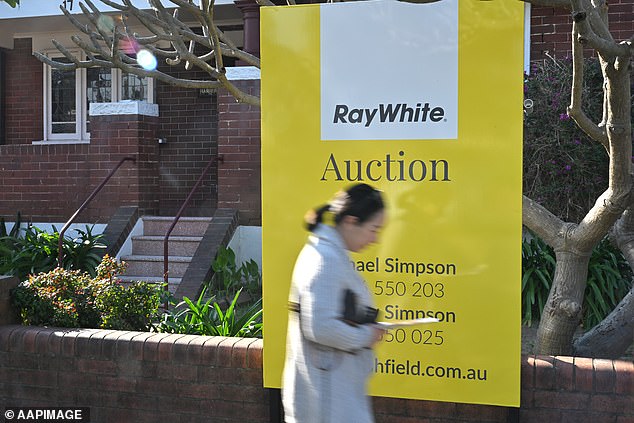Leith van Onselen: Australia has turned into a country of debt slaves

Australia has turned into a nation of debt slaves, with the number of million-dollar-plus suburbs doubling in just four years, a former Treasury expert says.
Leith van Onselen, MacroBusiness’s chief economist, made this point in an essay with a provocative title: ‘Australia: a country of housing millionaires and mortgage slaves’.
“Australia has sentenced would-be home buyers to debt service or being locked into the rental market,” he said.
In just four years, the share of suburbs with a median home price above $1 million has more than doubled, exacerbating Australia’s housing affordability crisis, new data from CoreLogic shows.
The average house price in the Australian capital of $997,352 is now almost ten times Australia’s average full-time salary of $100,017, with only working couples or the very wealthy able to buy.
Mr Van Onselen argued that this wealth was fake because it was based on younger generations having to borrow more.
“The rise in house prices in Australia has had a negative impact on our children, grandchildren and future generations, who will have to pay significantly more for housing than they should, making them poorer,” he said.
“In short, most of Australian household wealth is fake because it is tied up in overpriced properties and cannot be realised.
“Is Australia really ‘rich’ when housing affordability is at record lows and our younger generations cannot afford a home without financial support from their parents?”

Australia has now turned into a country of debt slaves because of unaffordable housing, an expert says
Nearly a third, or 29.3 percent, of Australian suburbs had an average property value above $1 million in August, CoreLogic revealed on Thursday.
At the outbreak of Covid in early 2020, only 14.3 per cent of Australian suburbs had median house and unit prices in the seven figures.
CoreLogic economist Kaytlin Ezzy said national house prices have risen by $53,000 in a year, despite the Reserve Bank raising interest rates 13 times in 2022 and 2023.
“With almost 30 per cent of suburbs averaging seven figures, the increase is a natural consequence of rising values and worsening affordability,” she said.
Australia’s debt crisis is so severe that the Reserve Bank published in its own Financial Stability Review this week that mortgage stress levels could worsen unless interest rates were cut.
“The pressure on households and businesses would increase if economic conditions deteriorate further than expected and/or if inflation and interest rates remain high for longer than expected,” the report said.

Leith van Onselen, MacroBusiness’s chief economist, made this point in an essay with a provocative title: ‘Australia: a nation of housing millionaires and mortgage slaves’
Little Real Estate general manager of sales and marketing James Kirkland said younger Australians can no longer afford to buy a home in a big city like their parents’ generation.
“It’s very difficult for any young person at the moment,” he told Daily Mail Australia.
“I have a lot of young family members and clients with children who are trying to take that step and without mom and dad stepping in – which is different from most generations before us – it’s a mountain top that’s too steep.”
Young people could now only enter the real estate market as investor-landlords, rather than as owner-occupiers of a house near where they worked and had a career.
“It’s harder to buy a property and then move in,” Kirkland said.
A rise in immigration has led to a national undersupply of housing, with more than 500,000 foreigners, on a permanent and long-term basis, arriving in the year to March.
This has also meant that house price growth has far outpaced wage growth, leading to skyrocketing debt burdens for those entering the housing market.
Australian household debt now stands at 184.7 percent of disposable income, after tax, which is significantly higher than the US level of 97 percent.
“Australia would be a significantly more egalitarian society, and we would be better off financially if our homes cost half the price they do now and we didn’t have so much debt,” Van Onselen said.
But possible rate cuts in early 2025 could lead to even stronger house price increases, with banks able to lend more if the Reserve Bank cuts the cash rate from the existing 12-year high of 4.35 percent.
“I just think we’re going to see a lot of transactions between now and next winter,” Kirkland said.




